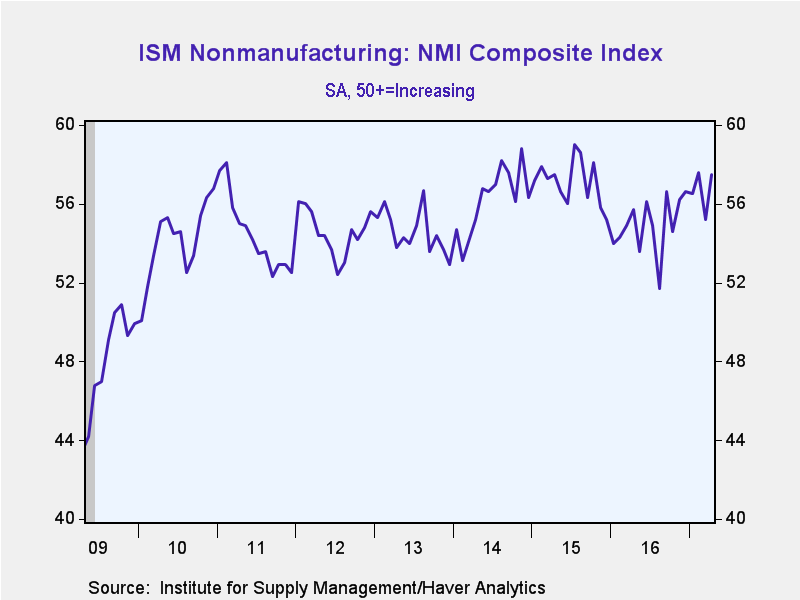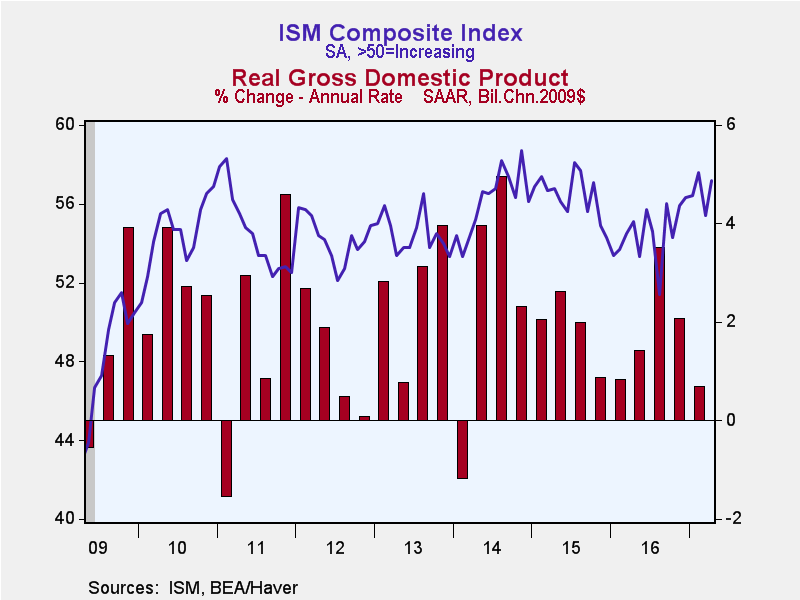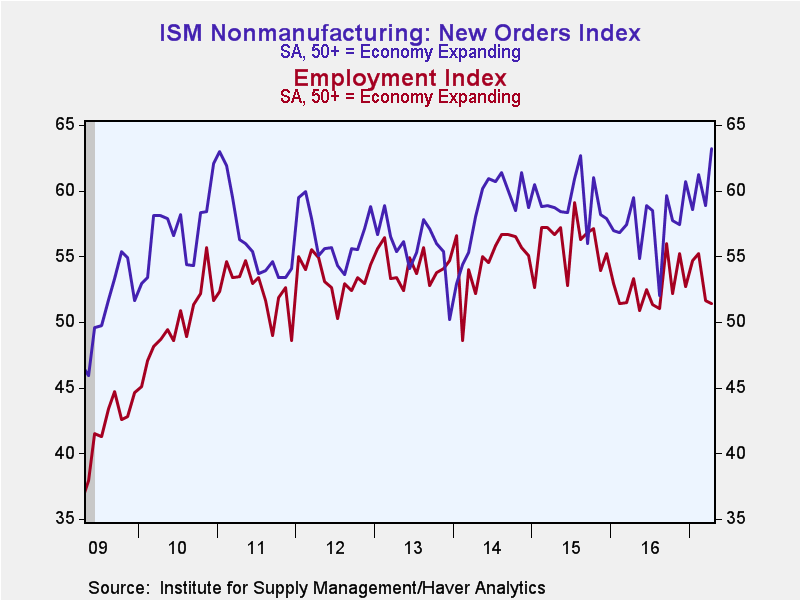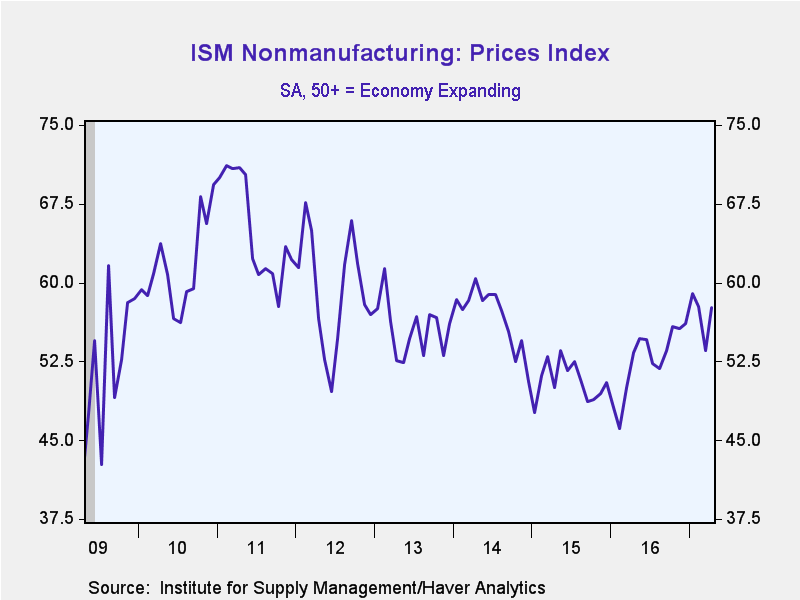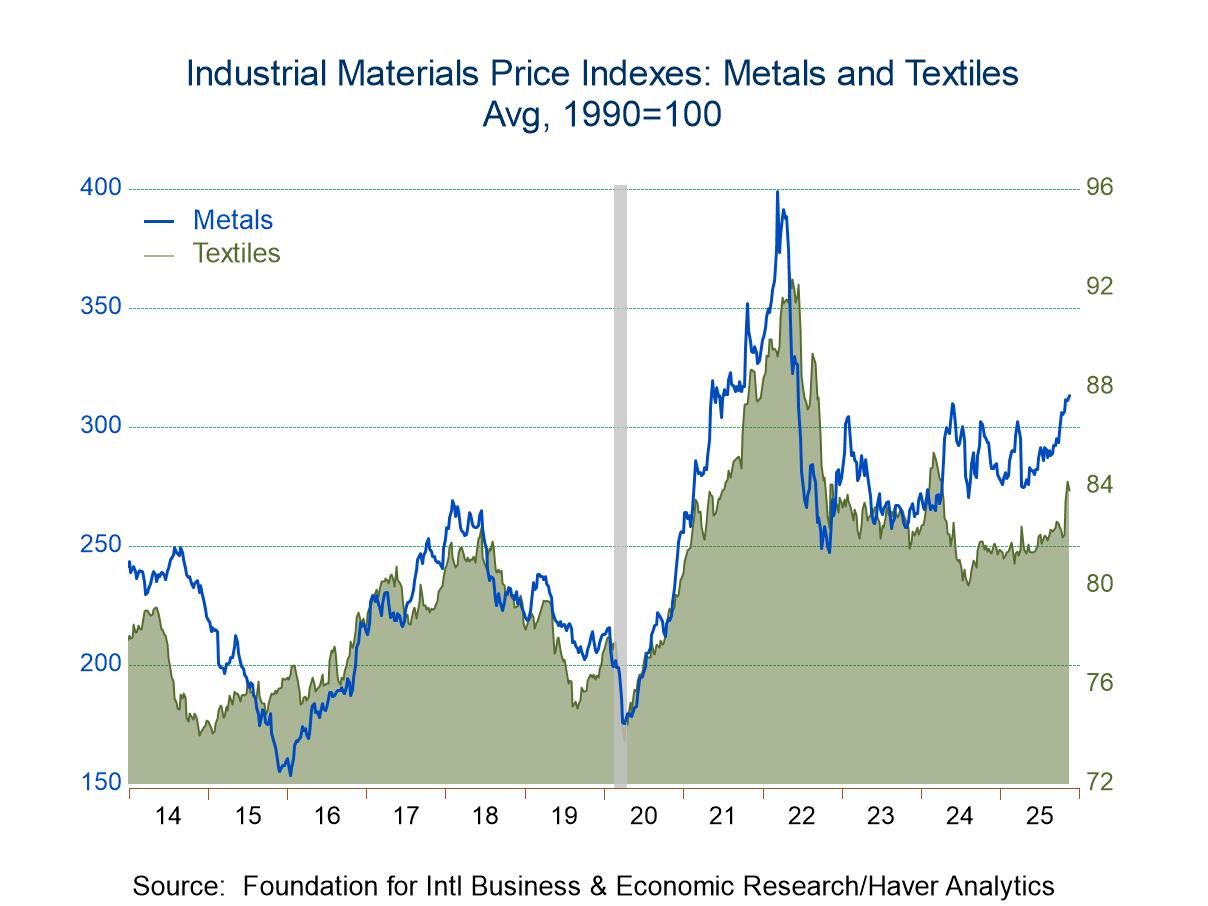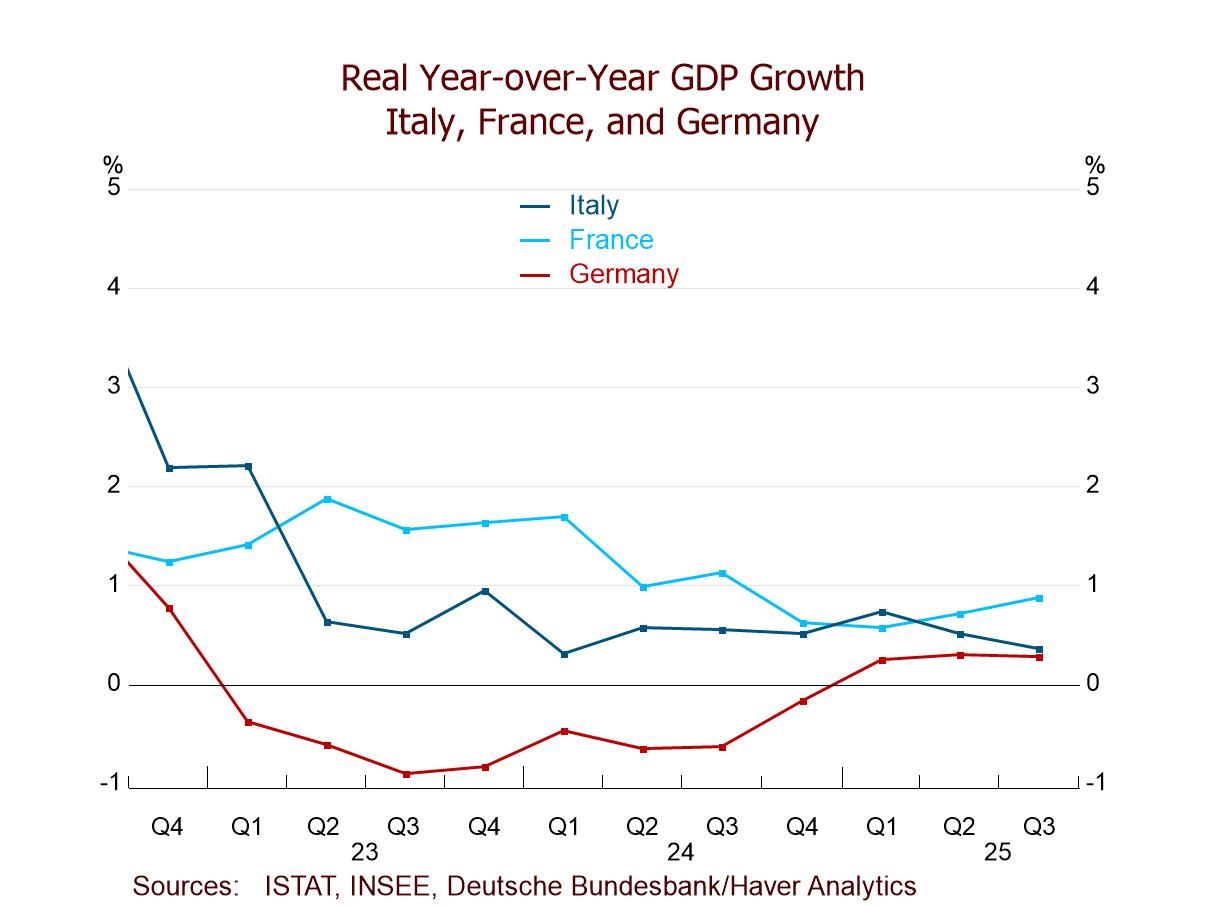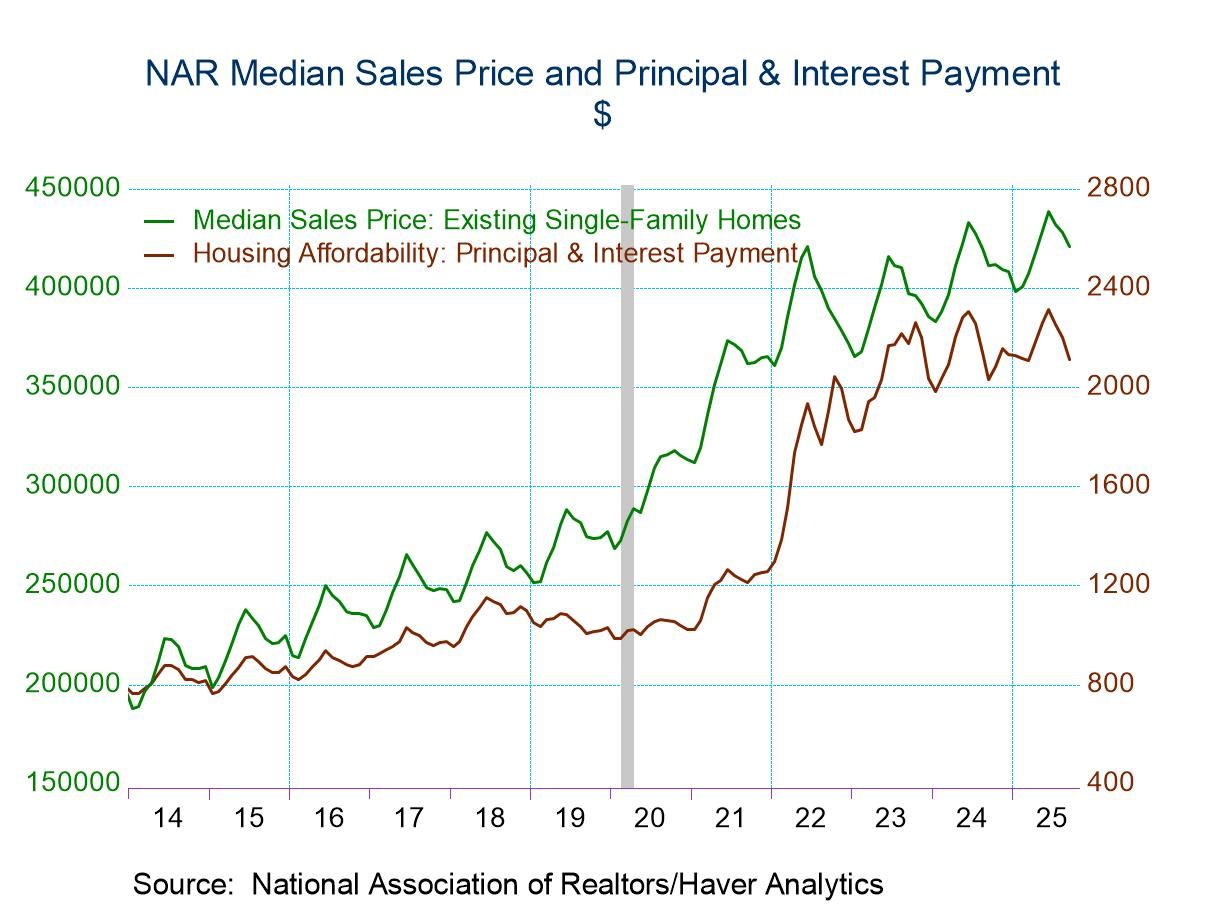 Global| May 03 2017
Global| May 03 2017U.S. ISM Nonmanufacturing Index and Prices Recover
by:Tom Moeller
|in:Economy in Brief
Summary
The Composite Index of Nonmanufacturing Sector Activity from the Institute for Supply Management (ISM) rebounded to 57.5 during April, and recovered most of the March decline to an unrevised 55.2. The Action Economics Forecast Survey [...]
The Composite Index of Nonmanufacturing Sector Activity from the Institute for Supply Management (ISM) rebounded to 57.5 during April, and recovered most of the March decline to an unrevised 55.2. The Action Economics Forecast Survey expected a reading of 56.0. The ISM data are diffusion indexes where readings above 50 indicate expansion.
Haver Analytics constructs a Composite Index using the nonmanufacturing ISM index and the ISM factory sector measure which was released Monday. This composite increased to 57.2 in April, after falling to 55.4 in March from February's 57.6. During the last ten years, there has been a 73% correlation between this index and the q/q change in real GDP.
Most of the nonmanufacturing index component series increased last month. The new orders reading surged to 63.2, the highest level of the economic expansion. The business activity index rose to 62.4 after falling to 58.9. The supplier delivery index increased to 53.0, indicating that delivery speeds slowed to the weakest pace since June. Working the other way, the employment index eased to 51.4, its lowest level since August. During the last ten years there has been an 89% correlation between the ISM nonmanufacturing sector jobs index and the m/m change in private service plus construction sector payrolls.
The prices paid index rebounded to 57.6 and recovered most of the March decline. Thirty-six percent (NSA) of firms reported paying higher prices, up from 8% at the low in December 2015. Five percent of firms paid lower prices, the least since June.
Amongst the other detail indexes, which are not seasonally adjusted, export orders surged m/m to 65.5, the highest level since May 2007. The import index eased m/m to 53.0, down from 54.0 one year earlier. The order backlog index rose to 53.5 from 51.5 twelve months earlier.
The ISM figures are available in Haver's USECON database, with additional detail in the SURVEYS database. The expectations figure from Action Economics is in the AS1REPNA database.
| ISM Nonmanufacturing Survey (SA) | Apr | Mar | Feb | Apr'16 | 2016 | 2015 | 2014 |
|---|---|---|---|---|---|---|---|
| Composite Diffusion Index | 57.5 | 55.2 | 57.6 | 55.7 | 54.9 | 57.1 | 56.2 |
| Business Activity | 62.4 | 58.9 | 63.6 | 58.8 | 58.0 | 60.8 | 59.6 |
| New Orders | 63.2 | 58.9 | 61.2 | 59.5 | 57.5 | 59.2 | 58.5 |
| Employment | 51.4 | 51.6 | 55.2 | 53.3 | 52.6 | 56.0 | 54.8 |
| Supplier Deliveries (NSA) | 53.0 | 51.5 | 50.5 | 51.0 | 51.5 | 52.5 | 51.8 |
| Prices Index | 57.6 | 53.5 | 57.7 | 53.3 | 52.7 | 50.6 | 56.7 |
Tom Moeller
AuthorMore in Author Profile »Prior to joining Haver Analytics in 2000, Mr. Moeller worked as the Economist at Chancellor Capital Management from 1985 to 1999. There, he developed comprehensive economic forecasts and interpreted economic data for equity and fixed income portfolio managers. Also at Chancellor, Mr. Moeller worked as an equity analyst and was responsible for researching and rating companies in the economically sensitive automobile and housing industries for investment in Chancellor’s equity portfolio. Prior to joining Chancellor, Mr. Moeller was an Economist at Citibank from 1979 to 1984. He also analyzed pricing behavior in the metals industry for the Council on Wage and Price Stability in Washington, D.C. In 1999, Mr. Moeller received the award for most accurate forecast from the Forecasters' Club of New York. From 1990 to 1992 he was President of the New York Association for Business Economists. Mr. Moeller earned an M.B.A. in Finance from Fordham University, where he graduated in 1987. He holds a Bachelor of Arts in Economics from George Washington University.


